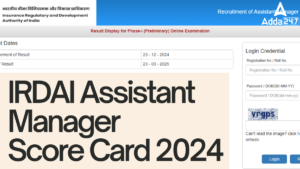Table of Contents
Directions (1-5): In each question some statements are followed by some conclusions. You have to take the given statements to be true and then decide which of the conclusions logically follow from the give statements, disregarding the commonly known facts. Given answer-
Q1. Statements: Some apples are mangoes.
Some Mangoes are oranges.
No oranges is apples
Conclusions:
I. Some mangoes that are oranges are apples.
II. Some apple that are mangoes are oranges.
(a) If only conclusion I follows.
(b) If only conclusion II follows.
(c) If either conclusion I or II follows.
(d) If neither conclusion I nor II follows.
(e) If both conclusion I and II follow.
Q2. Statements: Some birds are animals.
All animals are black.
No black is a white.
Some white are birds.
Conclusions:
I. Some birds which are black are not white.
II. All animals which are black are necessarily birds.
(a) If only conclusion I follows.
(b) If only conclusion II follows.
(c) If either conclusion I or II follows.
(d) If neither conclusion I nor II follows.
(e) If both conclusion I and II follow.
Q3. Statements: All scooters are buses.
All bikes are buses.
some buses are trains.
Conclusions:
I. All buses are either bikes or scooters.
II. Some scooters are train is a possibility.
(a) If only conclusion I follows.
(b) If only conclusion II follows.
(c) If either conclusion I or II follows.
(d) If neither conclusion I nor II follows.
(e) If both conclusion I and II follow.
Q4. Statements: All apples which are red are tasty.
Most red are apples.
Some balls are red.
Most apples are balls.
Conclusions:
I. Some red are tasty.
II. Some apples are neither red nor ball.
(a) If only conclusion I follows.
(b) If only conclusion II follows.
(c) If either conclusion I or II follows.
(d) If neither conclusion I nor II follows.
(e) If both conclusion I and II follow.
Q5. Statements: All cups are plates.
Some plates are bowls.
Conclusions:
I. Some bowls if they are cups, are also plates.
II. All bowls which are not plates are also not cups.
(a) If only conclusion I follows.
(b) If only conclusion II follows.
(c) If either conclusion I or II follows.
(d) If neither conclusion I nor II follows.
(e) If both conclusion I and II follow.
Directions (6-10): Study the following information carefully to answer the given questions:
Seven boxes S, P, L, Q, R, M and I are place one above the other in any particular order. Box no. 1 is at the bottom and box no. 7 is at the top. Three boxes placed between I and M. M placed on the place above S, which does not place on an odd-numbered place. P is neither placed on odd number place nor on topmost place. I does not placed on bottom place. Two boxes placed between R and S. Q placed neither on the bottom nor on the fourth place. Box M is not placed on top place.
Q6. Which box placed on just above M?
(a) L
(b) P
(c) Q
(d) R
(e) None of these
Q7. How many boxes between L and P?
(a) None
(b) One
(c) Two
(d) Three
(e) Can’t be determined
Q8. Which of the following pairs of boxes placed on bottom most and the topmost place respectively?
(a) L, Q
(b) Q, P
(c) I, Q
(d) L, I
(e) Can’t be determined
Q9. Which of the following box is placed on the topmost place?
(a) I
(b) Q
(c) P
(d) L
(e) None of these
Q10. Which of the following combinations is true?
(a) 1-S
(b) 4-R
(c) 3-M
(d) 6-I
(e) None of these
Directions (11-15): Study the following arrangement carefully and answer the questions given below:
Z 7 1 £ 9 $ A W K + 8 E L 3 = F 6 1 M 2 * B % O C < 5 U δ T
Q11. If all consonants in the above arrangement are dropped, which of the following will be the fifth from the right end?
(a) O
(b) $
(c) %
(d) A
(e) None of these
Q12. How many such consonants are there in the above arrangement each of which is immediately preceded by symbol but not immediately followed by a vowel?
(a) None
(b) One
(c) Two
(d) Three
(e) More than three
Q13. Which of the following is the tenth to the left of the eighteenth element from the left end of the above arrangement?
(a) %
(b) B
(c) K
(d) I
(e) W
Q14. How many such vowels are there in the above arrangement each of which is immediately followed by symbol but not immediately preceded by a number?
(a) None
(b) One
(c) Two
(d) Three
(e) None of these
Q15. Which of the following is exactly in the middle between A and M in the above arrangement?
(a) E
(b) L
(c) =
(d) 3
(e) None of these
SOLUTION
S6. Ans.(b)
Sol.
S7. Ans.(c)
Sol.
S8. Ans.(d)
Sol.
S9. Ans.(a)
Sol.
S10. Ans.(c)
Sol.
Solution (11-15):
S11. Ans.(a)
Sol. 7 1 £ 9 $ A + 8 E 3 = 6 1 2 * % O < 5 U δ
S12. Ans.(c)
Sol. =F 6,* B %
S13. Ans.(e)
Sol. 10TH to the left of 18th from the left = (18-10) = 8th from the left = W
S14. Ans.(a)
S15. Ans.(b)






 The Hindu Review October 2022: Download ...
The Hindu Review October 2022: Download ...
 IRDAI Assistant Manager Score Card 2024 ...
IRDAI Assistant Manager Score Card 2024 ...
 SBI Clerk Cut Off 2024, Check Previous Y...
SBI Clerk Cut Off 2024, Check Previous Y...




